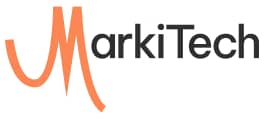
Online marketing spend @ B2B companies in 2013 on a steady rise and trend continued in 2014 and 2015
If you’re working in the B2B space, this blog is for you. It will arm you with the data necessary to convince, compel, and persuade skeptical or uninspired colleagues, clients, and executives who think that social media and digital marketing is not the way to go for the B2B segment.
I spent over 12 years developing, marketing and selling products within the B2B segment and another 5 years focused on the B2C sector. Here is my conclusion: social media can be MORE transformative for a B2B company than a B2C company or product. This is because B2B has a smaller potential customer base, a higher average price point, and a customer decision funnel that is more influenced by word of mouth and reputation. Turning your customers into advocates and marketers on behalf of your brand pays off a lot more when you’re selling $10,000 pieces of manufacturing equipment, than it does when you’re selling $3 cans of Pringles.
Even to this day, B2B companies are still skeptical of the benefits of social media and digital marketing for their business. The reason for this hesitation is a perceived inability to measure the effectiveness of such marketing activities. The key question has always been “what is the ROI?” On the other hand, B2C companies were the “early adopters” of social media marketing – this dichotomy perfectly demonstrates the strong differences between B2B and B2C marketing.
In this blog, I would like to make a case that social media and digital marketing is a growing trend within a comprehensive B2B marketing plan and strategy and has its own nuances as compared to the B2C segment. In almost every scenario we have encountered at MarkiTech, marcomm,technology, and brand manager executives have generally assumed that social and interactive activities and programming were ideally best suited for consumer applications. However, as we recently explored, in Social Media, it’s not just business, it’s business-to-business.
Mark Zukerman started Facebook as a platform for students to meet each other. Twitter started as a personal blog. Things have changed immensely in the years. Generally speaking, these companies were almost exclusively B2C. Over time, as the world started to realize the amazing potential of social media and digital marketing, forward thinking organizations began incorporating social media marketing into their overall marketing mix.
Business.com recently conducted a study that evaluated Social Media activities of those in B2B and B2C. In its report, “B2B Social Media Benchmarking Study,” Business.com found that North American companies focused on B2B were much more rigorous in the world of social media than those in B2C. As you’ll see, B2B leads the fray across the entire regiment of campaigns and programs.
Social Media: B2B vs. B2C
Maintained company-related profiles on social networks:
B2B: 81%
B2C: 67%
Participate in Twitter:
B2B: 75%
B2C: 49%
Host blog/s:
B2B: 74%
B2C: 55%
Monitor brand mentions:
B2B: 73%
B2C: 55%
Engage in discussions:
B2B: 66%
B2C: 43%
Participate in Q&A sites such as Yahoo Answers, LinkedIn, forums:
B2B: 59%
B2C: 44%
Upload content (social objects) to Social Networks:
B2B: 50%
B2C: 32%
Manage a community dedicated to customers or prospects:
B2B: 49%
B2C: 51%
Monitor/support user ratings and reviews:
B2B: 49%
B2C: 51%
Produce Webinars or podcasts:
B2B: 46%
B2C: 22%
Advertise on social networks:
B2B: 42%
B2C: 54%
Employee recruiting:
B2B: 36%
B2C: 27%
As expected, those companies engaging in social media, whether B2B or B2C, focused efforts on creating social network profiles, microblogging, blogs, and brand monitoring – hitting a high brand engagement of 81%. Most social activities however, maintained a level of participation with an average of around 50%. There is room for growth for brand engagement regardless of industry.
Notice the disparity between B2B and B2C adoption of Twitter. If these numbers truly reflect that of the greater community of businesses, B2B companies are at the forefront of this wildly scrutinized and popularized social property.
B2B: 77%
B2C: 83%
B2B: 73%
B2C: 45%
B2B: 56%
B2C: 27%
YouTube
B2B: 43%
B2C: 30%
Also, according to the Business.com study, 60% of B2B respondents leverage Twitter search to monitor brand or company mentions compared to just 35% of those in B2C. With Facebook slowly revising their privacy settings to open up real-time search capabilities within the 800+ million strong network to search for relevant conversations outside of Twitter and Google.
Google search results, at least prior to the real-time search revolution, also proved valuable for mining and unearthing relevant content. 59% of B2B and 40% of B2C companies report using Google Alerts and 60% of B2B and 61% of B2C reported that they actively googled themselves.
At MarkiTech, we have done research on how to use Social Media for B2B Marketing.
ROI: Return on Investment Question?
The number 1 question we get asked with respect to digital and social media marketing is about ROI. According to one study, 85% of businesses engaged in interactive programs were not measuring their ROI.
Even though measurement was more pervasive in B2B over B2C, participating companies appeared to actively measure social media in this case – at least those surveyed anyway. B2C companies tended to focus on revenues to assess ROI while B2B companies typically evaluated Web traffic, brand awareness, and the quality and volume of lead generation. That being the case, B2B and B2C reported that Web traffic was considered the top metric overall.
Social Media affects every part of the buying cycle. That is why a company-wide marketing programs must be engineered and deployed in order to effectively monitor behaviour and sentiment to effectively and genuinely shape perception, cultivate meaningful relations, and inspire action.
The General Buying Cycle in B2B & B2C Social Media and Digital Marketing is generally the same though purchasing stages are different. The general buying cycle usually follows these steps:
- Acknowledging a need and pain point
- Awareness
- Research
- Consideration (the short list)
- Evaluation
- Purchase
- Applications
- The Experience
- Reaction
- Opportunity for advocacy
It is how we engage at each step of this cycle that determines our place and stature within the inevitable path of attention, analysis, and action. Once we learn how and where to engage, we can then focus our efforts on earning affinity and advocacy. This is our time to garner relevance through the intelligent practice of poignant and relevant listening, understanding, and participation. In parallel, this is also our opportunity to establish authority and attention. Without it, it’s easy to vanish from the cycle of awareness and consideration. Out of sight, out of mind…
It should also not go unsaid that women rule the social web and influence the buying process in B2C environments According to Marti Barletta, author of Marketing to Women and PrimeTime Women, when men and women buy as partners, women control at least four out of five stages of the purchasing process. While this isn’t necessarily representative of the bigger picture, it is still nonetheless interesting and worthy of consideration. This is why in the world of B2C marketing, women are considered the Chief Household Officer as they’re actively driving and steering purchase decisions.
Conclusion
I hope I am able to convince you that digital and internet marketing is now table stakes for B2B clients / companies and not limited just to B2C companies. The article from Forbes clarifies that digital should be a board level concern.
By utilizing a digital marketing consulting firm for B2B marketers, such as MarkiTech, it is now possible to see the direct link between social posting and lead generation. We offer retainer and commission based sales and marketing for B2B segment especially focused on technology products and services.
What are your thoughts on the differences between social media marketing for B2B and B2C? Leave a comment below and let us know!

